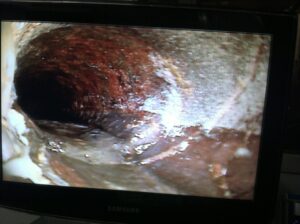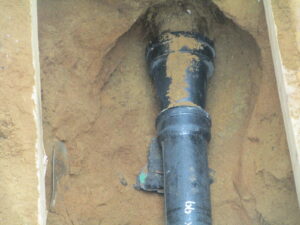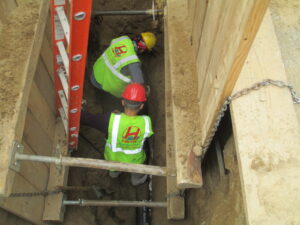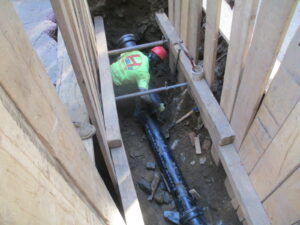Dealing with a broken sewer pipe is an unfortunate situation and tends to be confusing for many property owners. There are many variables to consider when making the right decision for your current situation, including the future plans for the property, material of the existing sewer pipe, and any previous work performed.
Many people like to take what is the most cost effective route in resolving today’s problem with the sewer line however, they do not factor in the future, and the possibility of facing a secondary break of the sewer line. It is a general rule of thumb not to repair a clay sewer line, it leaves to too much risk for a potential break in the near future. There are many homeowners who still opt into repairing a clay pipe, and continue to have a fully functional sewer line for many years. There are also many homeowners who repair a clay pipe and experience a secondary problem with the clay pipe a few months after the initial repair was completed. It is ok to repair a clay sewer pipe after discussing the pros and cons with your licensed plumber, and understand the risk associated with a sewer line repair.

Camera inspection determining broken clay pipe |

Repair of clay pipe |
If you are going to repair you sewer line, it is important to understand exactly where the pipe is broken. Many homeowners assume that the pipe is broken in a certain area based on a brief conversation with their internal plumber, and at this point will hire a sewer contractor to repair the pipe in the wrong place. You want to make sure that your internal plumber marks-out the exact location of the broken pipe to avoid any confusion and additional cost. In many cases the internal plumber cannot get past a certain point of the sewer line with the camera or sewer snake. It now becomes clear that there is a problem at this point, yet cannot determine if there is a secondary problem at another section of the sewer line. Making two separate repairs on a sewer line may end up costing the same amount as replacing the entire sewer line. For this reason it always makes more sense to replace the entire pipe, and avoid all risk of your plumber misdiagnosing the problem, or spending thousands of dollars to repair two separate sections of the pipe.

Installing new cast iron |

Installing new cast iron |
These days cast iron pipe is used when installing a new sewer line or replacing an old clay pipe. The average life span of a cast iron sewer line is 65 years. Installing a new cast iron sewer line will avoid all of the risk mentioned above and allow for a fully functional sewer line for many years to come.




















